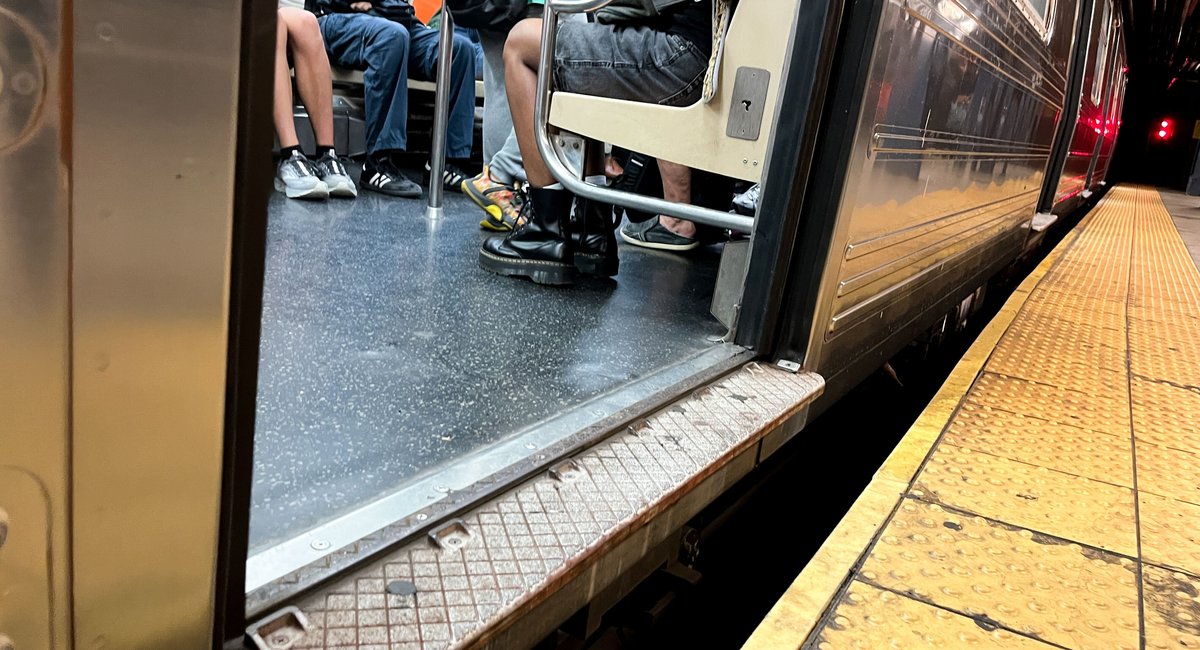“Mind the gap” is a familiar phrase to riders on the London Underground, where riders are famously warned of wide spaces between the Tube’s platforms and trains.
New York City’s subway has a similar problem — but the MTA hardly warns riders to tread carefully when boarding its trains. And an ongoing lawsuit that will continue to play out this fall aims to force the agency to fill in hundreds of those platform gaps, even as transit officials reckon with the fallout from Gov. Kathy Hochul’s congestion pricing pause that’s already derailed dozens of other subway accessibility projects.
The lawsuit, which accessibility rights advocates filed in 2022, alleges the MTA violates the city’s Human Rights Law by failing to close hundreds of “excessive” spaces between subway trains and platforms that make the system “hazardous” for disabled and elderly riders. The case is due back in court come October.
“I mind the gap,” ribbed 80-year-old Jacquelyn Goldenberg, one of the plaintiffs in the suit, as she looked at the 6-inch space between the platform and train at the 59th Street-Columbus Circle station. She has poor eyesight and achy knees, which forced her to balance carefully as she struggled to board a downtown C train.
Goldenberg pointed out the AARP’s monthly magazines warn elderly people to watch out for hazards in their homes like loose rugs, but said “the subway is just treacherous for someone who’s older.”
MTA officials have for years struggled to make the subway system compliant with the Americans with Disabilities Act, but two years ago the agency made an agreement through a separate lawsuit to make 95% of its 472 stations accessible by 2055. Still, just 147 stations — or 31% — currently have ramps or elevators, and the MTA earlier this summer announced it would hold off on work to make 23 more stations accessible as a result of Hochul’s pause of congestion pricing.
And while elevators are helpful for New Yorkers like Goldenberg, her lawsuit argues they’re all but moot if she can’t even get between the platform and the train. According to the suit, the platform gaps imperil a wide range of riders: its plaintiffs also include a blind woman who uses a guide dog and another woman who says her wheelchair got stuck on the platform at the 14th Street-Union Square station back in 2012.
“A person with a mobility or visual disability may access the station platform at an ‘accessible’ subway station and yet encounter extensive and life-threatening barriers to boarding or exiting a subway car,” the lawsuit states.
It cites a decade-old report that found the MTA deemed 91 stations with wide platform gaps “accessible” because they had elevators. Those gaps have still not been addressed, the lawsuit states.
The Americans With Disabilities Act deems a platform gap “excessive” if there’s a vertical space more than 2 inches high or a horizontal one that’s more than 4 inches wide.
The suit aims to force the MTA to take immediate action — even if that means adding cheap, low-tech equipment like wooden boards to give riders bridges to and from platforms.
“There’s a whole range of solutions, from as simple as a steel plate, a little bit of wood, a little bit of concrete, that can just make the city infinitely more accessible for those who genuinely need the subway to get around,” said Alex Peacock, one of the attorneys representing the plaintiffs. “The idea is to eliminate the gaps where they appear and where they’re worst.”
MTA spokesperson Mike Cortez said the agency “won’t comment on this litigation,” but noted work to add elevators is “currently in the pipeline” at 38 stations across the city.
Representatives for New York City’s Law Department — which is also a defendant in the case because the city technically owns the subway — also declined to comment on the suit.
